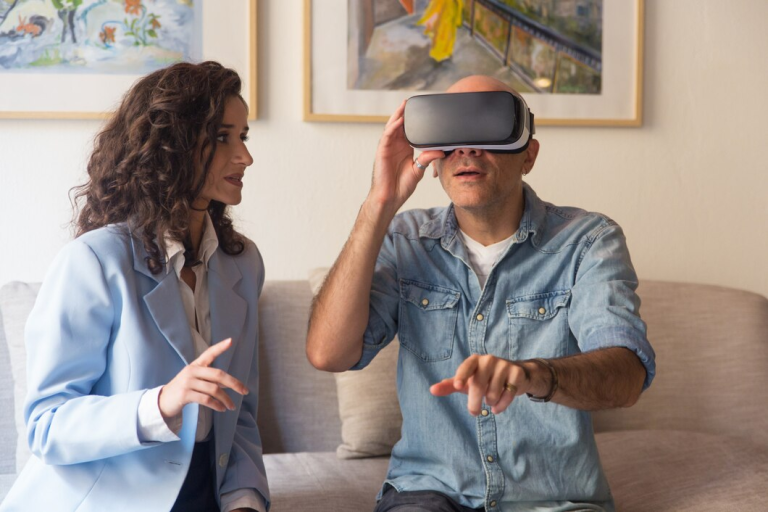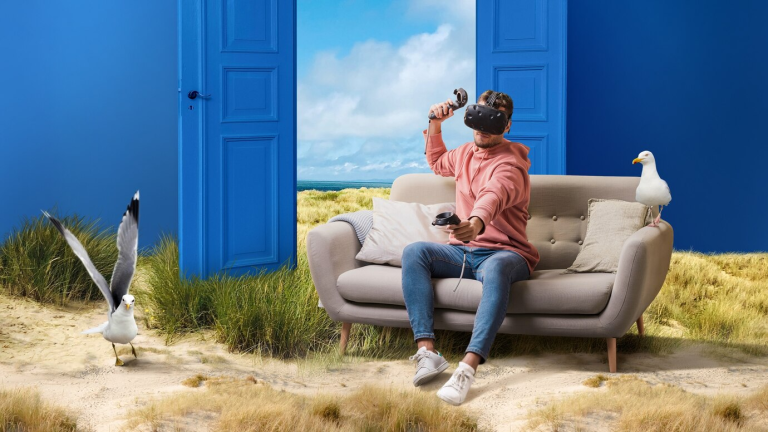Sustainability in architecture is more than just a trend; it’s a necessity. With climate change and resource depletion becoming increasingly pressing issues, architects and designers are shifting their focus toward creating eco-friendly and energy-efficient structures. But how do they bring these innovative designs to life while minimizing the environmental impact? Enter Virtual Reality (VR).
VR technology is not only revolutionizing how buildings are designed but also helping architects make more informed, sustainable choices. Let’s dive into the role VR plays in sustainable architecture design and why it’s a game-changer for the industry.
1. Visualizing Green Building Concepts
Sustainable architecture revolves around incorporating green building concepts like energy efficiency, natural lighting, ventilation, and the use of eco-friendly materials. Traditionally, visualizing how these elements will look and function in a real-world context was challenging. With VR, architects can now create immersive 3D models that allow them—and their clients—to “walk through” the space. This virtual walkthrough provides an accurate sense of how design choices will affect the building’s sustainability.
For instance, architects can simulate how natural light enters a room during different times of the day, helping them position windows, skylights, and shades optimally. This real-time visualization supports more effective decision-making, ensuring the final structure utilizes resources efficiently.
2. Optimizing Energy-Efficient Designs
One of the most significant aspects of sustainable architecture is energy efficiency. VR tools can simulate various energy-efficient features like HVAC systems, insulation, and solar panel placements. By virtually testing these elements in the design phase, architects can optimize the building’s energy performance before construction even begins.
Imagine virtually adjusting the placement of windows, walls, and insulation to see how they impact the building’s temperature regulation. VR simulations make this possible, allowing architects to design structures that naturally maintain comfortable temperatures, reducing the reliance on heating and cooling systems. This approach not only lowers energy consumption but also cuts costs in the long run.
3. Material Selection and Reduction of Waste
Choosing sustainable materials is crucial for eco-friendly construction. However, making the right choice is often complex, given the wide variety of options available. VR helps architects visualize how different materials will look and perform within a design. Architects can “swap out” virtual materials, like bamboo flooring or recycled steel, to evaluate their aesthetic and functional impacts.
This virtual material testing reduces the risk of choosing inappropriate or less sustainable materials, thereby minimizing waste during construction. By using VR to make more informed material choices upfront, architects can prevent the waste associated with design changes or rework, resulting in more sustainable construction practices.
4. Conducting Environmental Impact Assessments
A building’s environmental impact extends beyond its physical structure—it also includes its interaction with the surrounding environment. With VR, architects can simulate the building’s effects on the environment, such as its shadow patterns, wind flow, and potential heat island effects.
For example, VR can simulate how a building will cast shadows on nearby areas throughout the year. This insight is invaluable when designing features like green roofs or gardens that require specific light conditions. It also helps architects position the building to optimize natural ventilation, reducing the need for artificial cooling systems. By predicting and mitigating negative environmental impacts during the design phase, architects can make their projects far more sustainable.
5. Enhancing Collaboration for Sustainable Solutions
Sustainable architecture often requires collaboration among various stakeholders, including architects, engineers, environmental consultants, and clients. VR provides a common platform where all parties can interact with the design in real-time. This collaborative environment allows for quick feedback and collective decision-making, focusing on sustainable outcomes.
For instance, engineers can use VR to test the building’s structural integrity, while environmental consultants can assess its energy performance. Clients, on the other hand, can experience the design firsthand, making it easier to understand the benefits of sustainable features like natural lighting, solar panels, or rainwater harvesting systems. This level of collaboration ensures that all sustainability aspects are integrated seamlessly into the final design.
6. Educating Clients on Sustainability
One of the challenges in sustainable architecture is convincing clients of its long-term benefits. VR plays a vital role in this aspect by providing clients with a tangible, immersive experience of their future building. Instead of simply explaining how natural lighting will reduce energy bills, architects can use VR to show clients how sunlight will fill their living spaces at different times of the day.
This immersive education helps clients understand the value of sustainable features, making them more likely to invest in eco-friendly options. It bridges the gap between technical concepts and the client’s vision, resulting in more sustainable choices during the design and construction process.
7. Post-Occupancy Evaluations and Future Planning
Sustainability doesn’t stop at construction; it continues throughout the building’s lifecycle. VR can simulate the building’s performance post-occupancy, providing insights into energy consumption, ventilation efficiency, and occupant comfort. These virtual evaluations help architects identify potential improvements for future projects, refining their sustainable design strategies over time.
Conclusion
Virtual Reality is a powerful tool that is transforming sustainable architecture. By enabling architects to visualize, test, and optimize eco-friendly designs, VR ensures that buildings are constructed with minimal environmental impact and maximum efficiency. From material selection to energy optimization, VR makes sustainable architecture not just a possibility, but a practical reality.
Interested in integrating VR into your sustainable design projects? Contact VRchitects today to explore how our VR solutions can help you create buildings that are both innovative and environmentally friendly.






